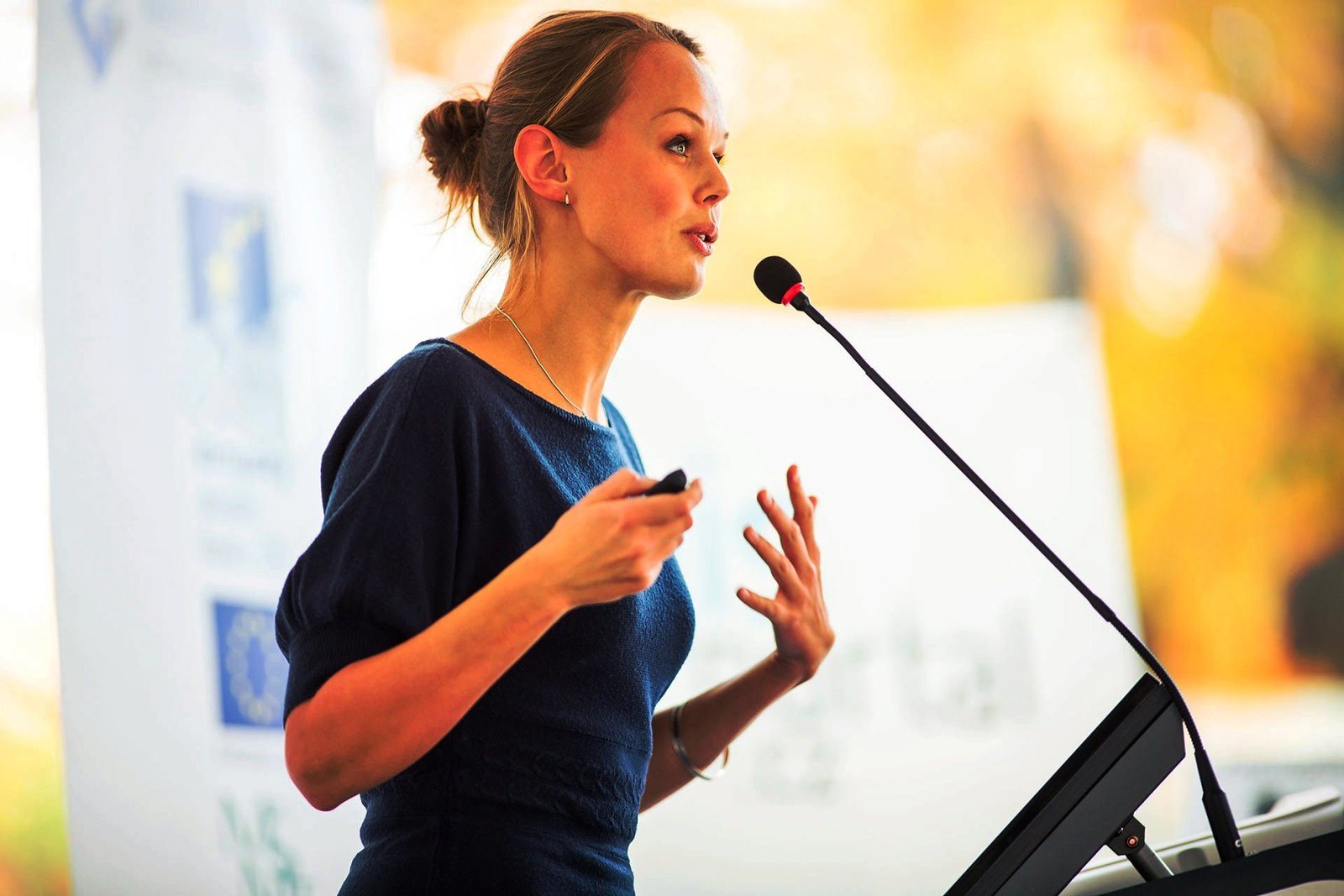Identifying Opportunities for Observing Trends; The First approach to identifying opportunities is to observe trends and study how they create opportunities for entrepreneurs to pursue. Also learn, What is the Difference between Leadership and Entrepreneurship? This article explains to the question How to Explain Observing Trends in Entrepreneurship? The most important trends to follow are economic trends, social trends, technological advances, and political action and regulatory changes. As an entrepreneur or potential entrepreneur, it’s important to remain aware of changes in these areas
Learn and understand, Explaining are Observing Trends in Entrepreneurship.
This sentiment affirms by Michael Yang, the founder of Become.com, a comparison shopping site, who believes that keen observation skills and a willingness to stay on top of changing environmental trends are key attributes of successful entrepreneurs: One of the most important attributes of a good entrepreneur is having a keen observation ability. Seeing what’s needed in people’s everyday lives and coming up with innovative new ideas and services that meet those needs . . . I always believe the entrepreneurs that anticipate trends and maintain observations of what’s needed . . . to solve those needs will have a higher chance of succeeding in the marketplace.
When looking at environmental trends to discern new business ideas, there are two caveats to keep in mind. First, it’s important to distinguish between trends and fads. New businesses typically do not have the resources to ramp up fast enough to take advantage of a fad. Second, even though we discuss each trend individually, they are interconnecting and should consider simultaneously when brainstorming new business ideas.
For example, one reason that smartphones are so popular is because they benefit from several trends converging at the same time, including an increasingly mobile population (social trend), the continued miniaturization of electronics (technological trend), and their ability to help users better manage their money via online banking and comparison shopping (economic trend). If any of these trends weren’t present, smartphones wouldn’t be as successful as they are and wouldn’t hold as much continuing promise to be even more successful as is the case.
A summary of the relationship between the environmental factors just mentioned and identifying opportunity gaps. Next, let’s look at how entrepreneurs can study each of these factors to help them spot business, product, and service opportunity gaps. Read more, What are the Participation and Organizational Climate?
Economic Forces:
Understanding economic trends help determine areas that are ripe for new business ideas as well as areas to avoid. When the economy is strong, people have more money to spend and are willing to buy discretionary products and services that enhance their lives. In contrast, when the economy is weak, not only do people have less money to spend, they are typically more reluctant to spend the money they have, fearing the economy may become even worse and that in turn, they might lose their jobs because of a weakening economy.
Paradoxically, a weak economy provides business opportunities for start-ups that help consumers save money. Examples include GasBuddy and GasPriceWatch.com, two companies started to help consumers save money on gasoline. A similar example is e.l.f., a discount retailer of women’s cosmetics. The company (which stands for Eyes Lips Face) sells cosmetics products for as little as $1.00.
First:
A poor or weak economy also provides opportunities for firms to sell upscale and everyday items at a “discount.” For example, daily deal sites like Groupon and LivingSocial have experienced rapid growth by providing consumers’ access to local providers of massages, trips to museums, high-end restaurants, and similar products or services at deep discounts. A similar example is Gilt Groupe, which sells luxury goods at a discount on time-limited sales. Brick-and-mortar retailers are affected by the search for discounts too.
For example, in 2009, Neiman Marcus reported a 14.8 percent drop in sales while Family Dollar experienced a 25 percent increase in revenues. The same mindset is contributing to people wanting the most value for their money, across the spectrum. For example, the recession has caused an upswing in the number of people frequenting local farmers markets, where people can buy locally grown produce, meats, and other food products that are fresher and often cheaper than similar products at the grocery store.
Second:
It’s also important to evaluate how economic forces affect people’s behaviors beyond looking for discounts and the most value for their money. For example, when the economy is weak, more people go back to school; largely as a result of poor employment prospects. This trend provides opportunities not only for traditional and online colleges and universities but for businesses that develop products to assist them.
An example is BenchPrep, the student-initiated business profiled in the opening feature. BenchPrep, which sells Apple iPhone and Android apps that help people prepare for college admission tests, is benefiting from an increase in college enrollments. Similarly, when the economy is poor, more people start businesses. Web-based businesses like Etsy, which provides a platform for people to sell handmade items; thrive when an increasing number of people are looking to open full-time or part-time businesses.
Third:
An understanding of economic trends can also help identify areas to avoid. For example, this is not a good time to start a company that relies on fossil fuels; such as airlines or trucking or perhaps even local transportation-related businesses such as a taxicab company, because of high fuel prices. Certain product categories suffer as a result of economic circumstances. This is not a good time to open a store or franchise that sells premium-priced food products like cookies or ice cream.
Social Forces:
An understanding of the impact of social forces on trends and how they affect the new product, service, and business ideas is a fundamental piece of the opportunity recognition puzzle. Often, the reason that a product or service exists has more to do with satisfying a social need than the more transparent need the product fills. The proliferation of fast-food restaurants, for example, isn’t primarily because of people’s love for fast food but rather because people are busy and often don’t have time to cook their meals.
First Things:
Similarly, social networking sites like Facebook and Twitter aren’t popular because they can use to post information and photos on a Web site. They’re popular because they allow people to connect and communicate with each other, which is a natural human tendency. Changes in social trends alter how people and businesses behave and how they set their priorities. These changes affect how products and services are built and sold. Here is a sample of the social trends that are currently affecting how individuals behave and set their priorities:
- Aging of baby boomers,
- The increasing diversity of the workforce,
- Increasing interest in social networks such as Facebook and Twitter,
- The proliferation of mobile phones and mobile phone apps,
- An increasing focus on health and wellness,
- Emphasis on clean forms of energy including the wind, solar, biofuels, and others,
- Increasing the number of people going back to school and/or retraining for new jobs, and
- Increasing interest in healthy foods and “green” products.
Each of these trends is providing the impetus for new business ideas. An increasing emphasis on alternative forms of energy is spawning business ideas ranging from solar power to biofuels.
Second Things:
The aging of the baby boomers is creating business opportunities from vision care to tech assistance to senior dating sites. An example is Glaukos, a company that’s developing new approaches for treating glaucoma, which is an age-related eye disorder. There are now 76 million baby boomers (people born between 1946 and 1964) in the United States. Many baby boomers will develop glaucoma and similar age-related ailments. The fact that roughly 10,000 baby boomers in the United States are now retiring daily also creates entrepreneurial opportunities related to social trends associated with this population of senior citizens.
Third Things:
The proliferation of mobile phones and mobile phone apps is a social trend that’s opening business opportunities for entrepreneurs across the globe. For example, both Runkeeper, the focus of Case 1.1, and ScriptPad, the focus of Case 2.1, are mobile phone apps. In the past 10 years, the worldwide penetration of mobile phones has grown from 1 billion to 4 billion active users. One company, PharmaSecure, the focus of the “You Be the VC 2.1” feature, is leveraging this trend to save lives in developing countries. It’s estimated that 10 percent of medications sold worldwide are counterfeit. In India alone, 1 million people a year die from ingesting counterfeit drugs.
Forth Things:
PharmaSecure provides drug companies the ability to place a nine-digit alphanumeric code directly on the blister pack, medicine bottle or vial, or on the product’s label, along with a phone number. Consumers can verify the code and by extension make sure the drug they have purchased isn’t counterfeit by texting it to the accompanying phone number. In India, PharmaSecure’s initial market, 55 percent of the population has a mobile phone, and it’s the fastest-growing market for mobile phones in the world. If it weren’t for the proliferation of mobile phones in India and elsewhere, PharmaSecure’s business wouldn’t be possible.
Fifth Things:
The booming interest in social networking sites such as Facebook and Twitter is a highly visible social trend. Nearly half of all Americans are now members of at least one social network; double from just two years ago. Social networks not only provide people with new ways to communicate and interact with each other, but they act as platforms for other businesses to build on. Zynga, for example, the maker of popular online games like FarmVille and Scramble; became popular by making browser-based games that worked as application widgets on Facebook and MySpace. Similarly, entrepreneurs have launched businesses to start social networks that cater to specific niches. An example is PatientsLikeMe, the subject of Case 1.2, which is a social networking site for people with serious diseases.
Technological Advances:
Advances in technology frequently dovetail with economic and social changes to create opportunities. For example, there are many overlaps between an increased focus on health and wellness and technology. Airstrip Technologies, a recent start-up, enables doctors to monitor critical patient information remotely on a smartphone or computer. The company’s founding was motivated by a desire on the part of doctors to stay in closer contact with their critical care patients while away from the hospital and while those patients are receiving treatment in locations outside a hospital.
Tech first:
Advances in wireless technologies made the system possible. In most cases, the technology isn’t the key to recognizing business opportunities. Instead, the key is to recognize how technologies can use and harness to help satisfy basic or changing needs. It’s always been difficult for doctors to leave the bedsides of critically ill patients, for example. Now, as a result of the advent of smartphones and wireless networks; a company like Airstrip Technologies can develop products to help doctors remotely monitor their patients’ conditions.
Technological advances also provide opportunities to help people perform everyday tasks in better or more convenient ways. For example, OpenTable.com is a Web site that allows users to make restaurant reservations online and now covers most of the United States. If you’re planning a trip to San Diego, for example, you can access OpenTable.com, select the area of the city you’ll be visiting, and view descriptions, reviews, customer ratings, and in most cases the menus of the restaurants in the area.
You can then make a reservation at the restaurant and print a map and the directions to it. The basic tasks that OpenTable.com helps people perform have always been done looking for a restaurant, comparing prices and menus, soliciting advice from people who are familiar with competing restaurants and getting directions. What OpenTable.com does is help people perform these tasks more conveniently and expediently.
Teah second:
Another aspect of technological advances is that once a technology is created, products often emerge to advance it. For example, the creation of the Apple iPod, iPhone, iPad, and similar devices have in turned spawned entire industries that produce compatible devices. An example is H2OAudio, a company that was started by four former San Diego State University students; which makes waterproof housings for the Apple iPhone and iPod. The waterproof housings permit iPhone and iPod users to listen to their devices; while swimming, surfing, snowboarding, or engaging in any activity where the device is likely to get wet.
A similar industry is the one dealing with smartphone apps. As of May 2011, there were over 381,000 third-party apps available in Apple’s App Store and over 294,000 in the Android Market (Google’s app store).13 The app market is large and growing, all because of the advent of wireless networks and smart devices like the iPhone and iPad. To provide perspective on how big the app market is, at 10:26 A.M. GMT on Saturday, January 22, 2011, the 10 billionth app was downloaded from the Apple App Store.
Political Action and Regulatory Changes:
Political and regulatory changes also provide the basis for opportunities. For example, new laws create opportunities for entrepreneurs to start firms to help companies, individuals, and governmental agencies comply with these laws. For example, the No Child Left Behind Act of 2002; which is based on the notion of outcome-based education requires states to develop criterion-based assessments in basic skills to periodically give to all students in certain grades. Shortly after the act was passed, Kim and Jay Kleeman, two high school teachers, started Shakespeare Squared; a company that produces materials to help schools comply with the act.
Extra information:
On some occasions, changes in government regulations motivate business owners to start firms that differentiate themselves by “exceeding” the regulations. For example, several years ago, the Federal Trade Commission changed the regulation about; how far apart the wood or metal bars in an infant crib can be. If the bars are too far apart; a baby can get an arm or a leg caught between the bars, causing an injury.
An obvious business idea that might spawn by this type of change is to produce a crib; that advertises and position as “exceeding” the new standard for the width between bars and is “extra safe” for babies and young children. The change in regulation brings attention to the issue and provides ideal timing for; a new company to reassure parents by providing a product that not only meets but exceeds the new regulation.
Business change:
Some businesses and industries are so dependent on favorable government regulations that their literal survival threatens if a regulation change. An example of a business that fits this profile is Almost Family, a company that provides home health nursing services. Almost Family receives the majority of its income via fixed payments from Medicare based on the level of care that it provides its clients. As a result, the company’s profitability is highly sensitive to any changes in Medicare reimbursement policies.
Political change:
The political change also engenders new business and product opportunities. For example, global political instability and the threat of terrorism have resulted in many firms becoming more security conscious. These companies need new products and services to protect their physical assets and intellectual property; as well as to protect their customers and employees. The backup data storage industry; for example, is expanding because of this new trend in the tendency to feel the need for data to be more protected than in the past. An example of a start-up in this area is Box.net; which was funded by Mark Cuban, the owner of the Dallas Mavericks. Box.net allows its customers to store data “offsite” on Box.net servers, and access it via an Internet connection.










